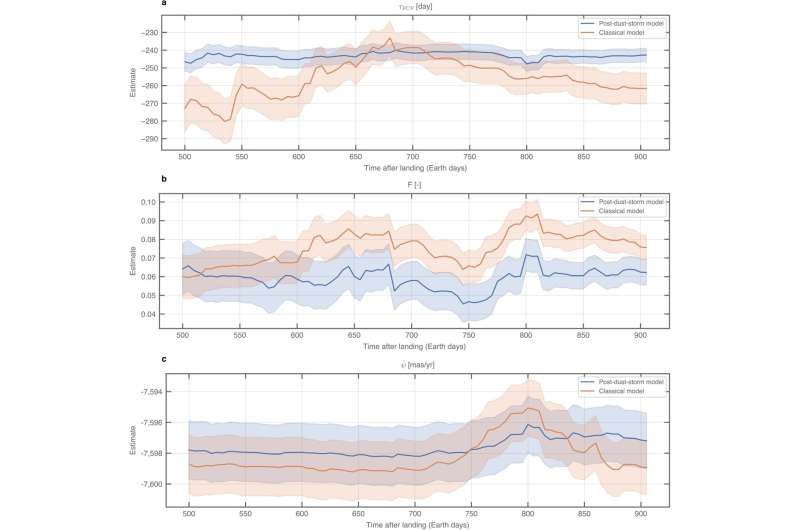June 16, 2023 report
This article has been reviewed according to Science X's editorial process and policies. Editors have highlighted the following attributes while ensuring the content's credibility:
fact-checked
peer-reviewed publication
trusted source
proofread
Data from InSight suggests Mars has an all-liquid core and internal mass anomalies

A team of planetary scientists from Belgium, the U.S., France and Germany has found evidence from the InSight lander that suggests Mars has an all-liquid core and internal mass anomalies. In their paper published in the journal Nature, the group describes their analysis of data sent back to Earth from the lander.
As the research team notes, determining the interior characteristics of the solar system's planets is hindered by their inaccessibility. In this instance, they were referring to work by research teams attempting to determine the inner makeup of Mars. To date, no one has been able to show whether its core is solid or liquid, for example—a characteristic that could impact work exploring whether the planet ever harbored life.
In this new effort, the researchers focused their efforts on data from the InSight lander, which landed on Mars in 2018. It sent data from the day it landed until December 2022, when dust covered its solar panels, preventing it from recharging. The researchers note that InSight had two main sensors, one that used a seismometer to measure marsquakes and other, called RISE, that sent radio signals from the lander back to Earth. Because they were able to site the lander so precisely, RISES's signals could be used to monitor the rotation of the red planet and its wobbles, both of which offered clues about the planet's interior.
The researchers found evidence in RISE DATA of what they describe as "mass anomalies" beneath the surface of the planet. The anomalies were found to stretch from the top of the mantel to the bottom. They further note that Mars' gravity field and likely its overall shape is mainly determined by the rotation rate of the planet. But they suggest that the anomalies may have an impact, as well. More importantly, by studying data related to the core and characterizing it separately from data related to the mantle, the team found what they believe to be evidence showing that Mars' core is molten liquid—and they also found a slight increase in the planet's spin.
More information: Sébastien Le Maistre et al, Spin state and deep interior structure of Mars from InSight radio tracking, Nature (2023). DOI: 10.1038/s41586-023-06150-0
Journal information: Nature
© 2023 Science X Network





















